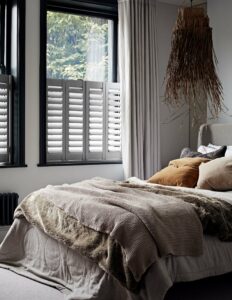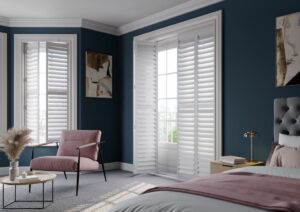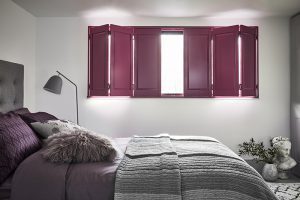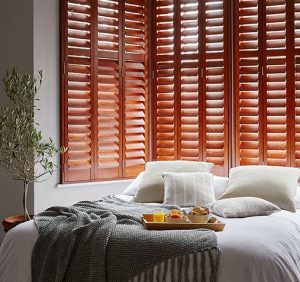Instances of allergies and asthma are on the rise. No, really; we’ve done the research. There are several reasons for this, and while we’re no experts, environmental factors like air pollution, toxins, and irritants seem to be a big player.
If you suffer from allergies or hay fever sending your sniffles haywire, the solution could be to investigate your own home.
So, with that in mind, here are some of our top tips for transforming your bedroom into an anti-allergy haven.

Bed check
Your bed and bedding are likely culprits. We don’t want to frighten you, but did you know that the average bed is home to over 10,000 dust mites, a prime cause of allergies? Consider how long you spend in bed. A little too much time? Yes, us too.
And if you’ve had your mattress for more than eight years, it’s definitely time for a new one. Look for mattresses with the British Allergy Association seal of approval. If a new mattress is out of your budget, an anti-allergy mattress protector can also help.
For bedding, opt for anti-allergy pillows and duvets. Hypoallergenic bedding contains materials less likely to provoke allergies, while anti-allergy branded bedding helps to reduce dust mite development. Remember to wash your bedding at 60 degrees regularly to kill dust mites. A slatted bed base also allows more air circulation than a divan, while a bed on legs makes cleaning underneath much easier.

Check your floor
Carpets are a haven for dust and mites, so consider switching to hardwood floors that are easy to vacuum clean. Of course, that’s a tall order financially, so this won’t be everyone’s first port of call.
To keep your bedroom cosy, place low-pile, machine-washable rugs near the bed. Regularly cleaning and shaking out your rugs can also help to keep allergens at bay. You might also consider getting a vacuum with a HEPA filter to ensure the thorough removal of dust and allergens from your flooring.
Give your clothes a breather
Wardrobes can accumulate dust. While open wardrobes or rails may look chic, keeping clothes behind closed doors is better for your health. Replace your shelves with wire racks to improve air circulation and prevent damp and dust build-up.

Window watch
Air your bedroom daily by opening the window in the early morning. But remember to close it during the day when pollen counts are highest. Avoid heavy fabric curtains that trap dust; instead, go with shutters with wide slats that can be easily wiped clean.
Shutters: An Ally for Allergy Sufferers
One of the surprising benefits of bedroom shutters is how they can help with allergies. Unlike heavy curtains that collect dust and pollen, shutters offer a smooth, hard surface that can be easily wiped clean with a damp cloth. This prevents allergens from accumulating and recirculating in your home.
Shutters also allow you to control ventilation effectively. By adjusting the slats, you can let fresh air in while keeping pollen out, creating a healthier indoor environment. Their robust design also means there are no fabric fibres to trap allergens, reducing the presence of dust mites and other airborne irritants.
Shutters can be custom-fitted to any window size or shape. This means you won’t have to worry about gaps where dust can settle, making them an ideal choice for bedrooms, where maintaining a clean and allergen-free environment is crucial for a good night’s sleep.

Book Your Free Appointment Today
Shutters are the perfect window treatment for allergy sufferers, but there’s more to them than that. The benefits of bedroom shutters include their versatility, low maintenance, kerb appeal, and how gosh darned pretty they are!
So, if you fancy getting your own, get in touch to book your free in-home survey today.
